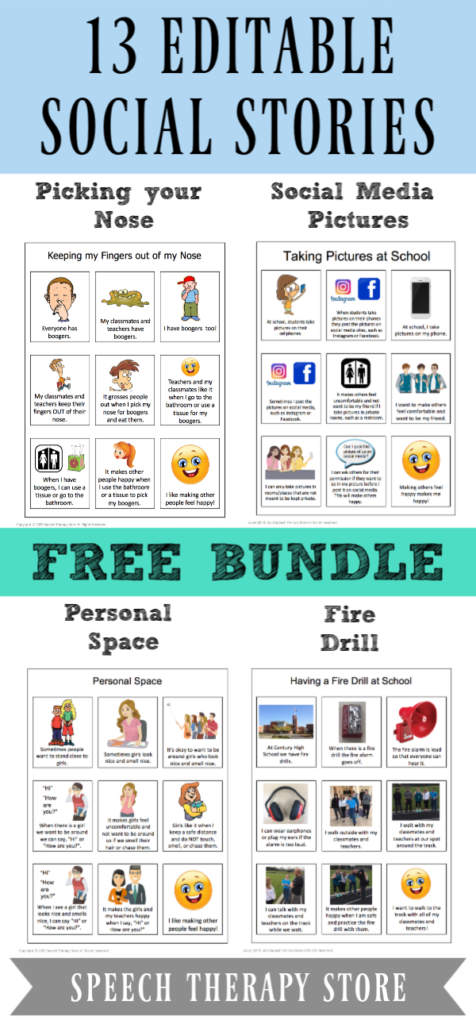In 1991, Social StoriesTM were first created by Carol Gray. Social stories are a simple description of how to behave and what to expect in a particular situation or activity. They provide very specific guidance about a situation and directions for how to respond and behave in various social situations. A social story is meant to help explain expected social behaviors in a given situation. Social stories may use words or images or both to help present the expected circumstances in a situation for the individual student.
The following terms ‘social story’ and ‘social stories’ are both trademarks created and owned by Carol Gray.
Types of Social Stories
The following are the different types of social stories that can be used to:
- accomplish grooming and self-care skills (e.g., how to wash hands, brush teeth, or get dressed), social skills (e.g., asking for help, expected classroom behaviors, hitting, or joining a group) and academic skills.
- explain how others might feel or behave in a particular situation (e.g., some people like loud music).
- cope with changes to routine and unexpected or troubling events (e.g., absence of a teacher, fire drill, snow day).
- help with expected and unexpected behaviors (e.g., what to do when you want to finish the assignment, how to cope with an annoying classmate).
- describing an upcoming event (e.g., doctor’s office, dentist, field trip).
How can Social Stories Help?
Social stories can help provide students with autism a literal way to understand a difficult or confusing previous situation or activity. A social story can be modified and adapted to meet each student’s individual needs and learning style.
They can help with executive functioning, such as organizing and planning out a series of steps.
In addition, social stories can provide the student with what to expect in a particular situation and guidelines for how they are expected to behave in that given situation. This can help reduce a student’s level of anxiety and reduce unwanted behaviors.
Who Can Use a Social Story™?
Social stories were originally created for the use with children with autism spectrum disorders (ASD). However, social stories can be beneficial for any child who struggles with social communication or social skills.
How to Write a Social Story™
Social stories are typically written in first person and from the student’s perspective. The story should answer the who, what, when, where, and why about the particular situation or the expected behavior you are trying to elicit from the student.
- Identify Situation: First, start by identifying a situation in which your student is struggling to understand or struggling to display the expected behavior in a particular situation.
- Two Main Sentence Types: There are two main types of sentences 1) descriptive and 2) directive.
- Descriptive Sentences:
- Factual Sentence: “The students are sitting.”
- Perspective Sentence: “It makes the teacher happy when I have safe hands”
- Cooperative Sentence: “If I need help, I can ask my tablemate first.”
- Affirmative Sentence: Staying calm when I don’t finish my assignment is good.
- Directive Sentences:
- Create Possible Responses (e.g., “If I know the answer, I can raise my hand and wait quietly for the teacher to call on me.”)
- Help Guide the Student’s Behavior (e.g., “I can try to…”).
- Descriptive vs. Directive: While writing the social story try to keep a ratio of at least 2 descriptive sentences for every directive sentence. It is important to keep the story more descriptive than directive.
- Have Your Student Help: If your student is able they can be a part of the creation of the social story. This can help aide in the ownership of the story and increase compliance. You can use open-ended questions to help guide the student in creating their own social story.
- Add Pictures: Use real-life photos of your student if possible or other visuals to help increase a student’s understanding. Place the pictures above the text and make sure they help to increase the overall understanding of the social story.
How to Introduce a Social Story?
- Read through the story with your student.
- The social story should be read often and before a difficult situation.
- As your student begins to perform the social story with appropriate social skills the story can be read less frequently.
Social Story™ Example
Background information: Marcus is a 3rd grader who is diagnosed with Autism Spectrum Disorder and struggles when there is a substitute teacher at school.
- Descriptive: Sometimes my teacher is sick and there is a substitute teacher for one day or a few days.
- Descriptive: It can be scary when there is a new teacher because I don’t know them.
- Descriptive: When there is a substitute teacher I can ask them their name or questions about themselves to get to know them better.
- Descriptive: When there is a substitute teacher I will know first thing in the morning and can read my social story.
- Directive: When there is a substitute teacher and I am overwhelmed by the change I can ask for a break and go to the reading corner for 5 minutes.
- Descriptive: It will make my teacher Mrs. K happy to hear that when I was sad or overwhelmed I asked for a break and read a book.
- Descriptive: I like making Mrs. K happy!
Reading the Story
It is important to sit down with the student and read the story to him or her or have them read the story to themselves. The children should be in a “ready to learn” state. Read the book several times and have the children read it as well if possible. Discuss personal experiences regarding the story to make connections to real-world situations.
After the Story
After reading the story with the student several times role-play the scenario and expected behaviors. When the child exhibits the expected behaviors provide them with positive feedback. Be sure to keep the social story in close proximity to the student so they can have access to it as needed.
Example Stories
Below are a few examples of the editable social stories that come along with this freebie! The freebie includes all of the following:
- Keeping my Fingers out of my Nose
- Taking Pictures at School
- Personal Space
- Having a Fire Drill
- Moving Around the Cafeteria (high school)
- Using my Cellphone at School (high school)
- Closing the Bathroom Door
- Mimicking Others (echolalia)
- Not Hitting Other People
- Popping Pimples
- Think Inside My Head (social filter)
- Walking Down the Hallway
- Safe Zones at School
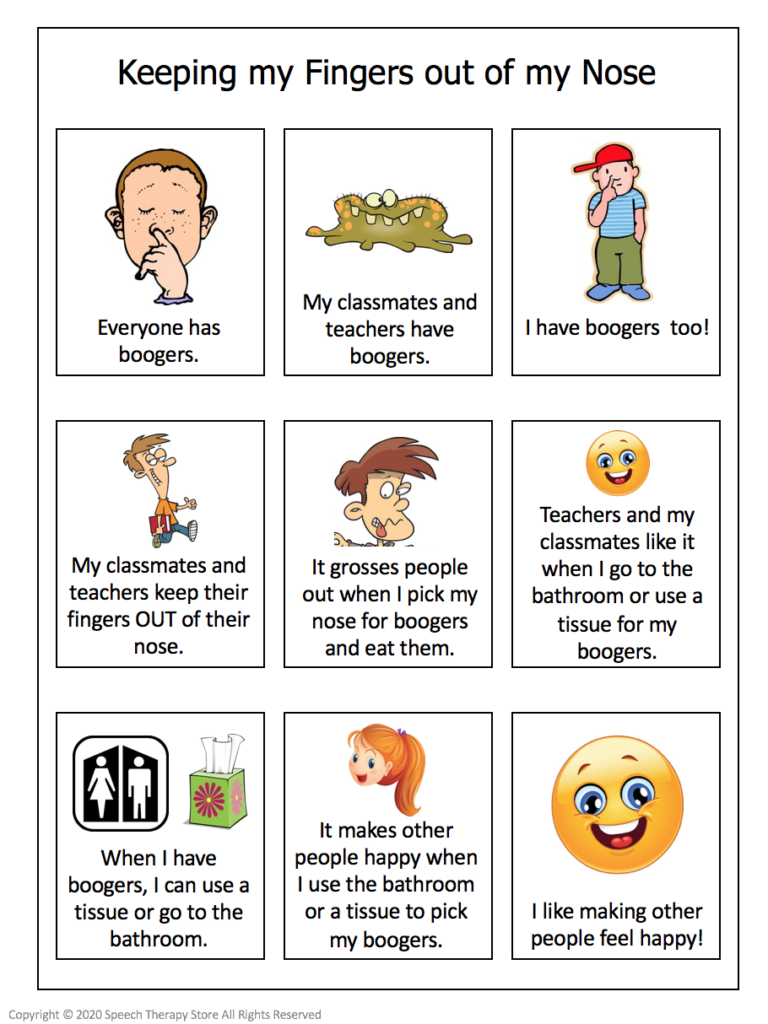
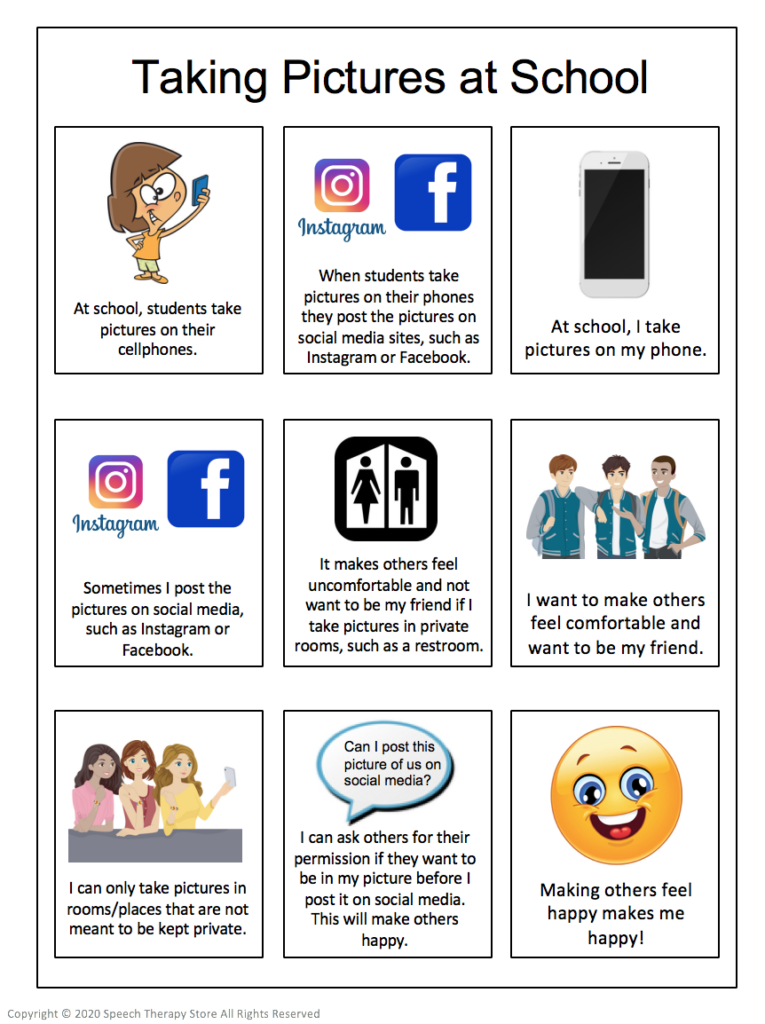
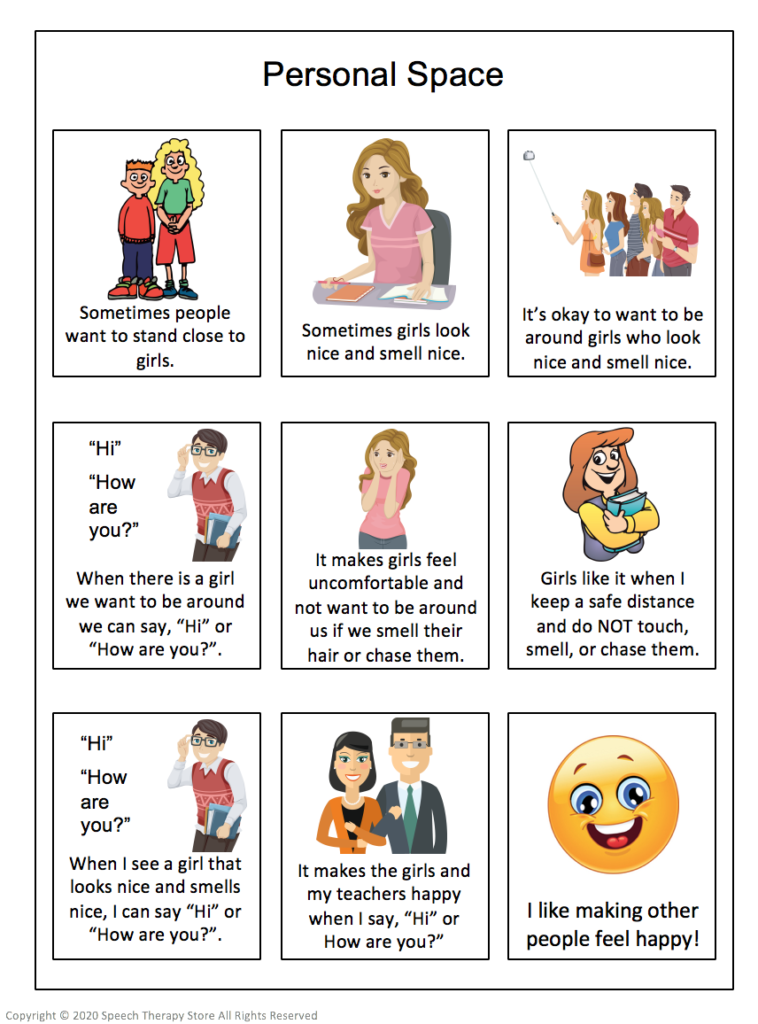
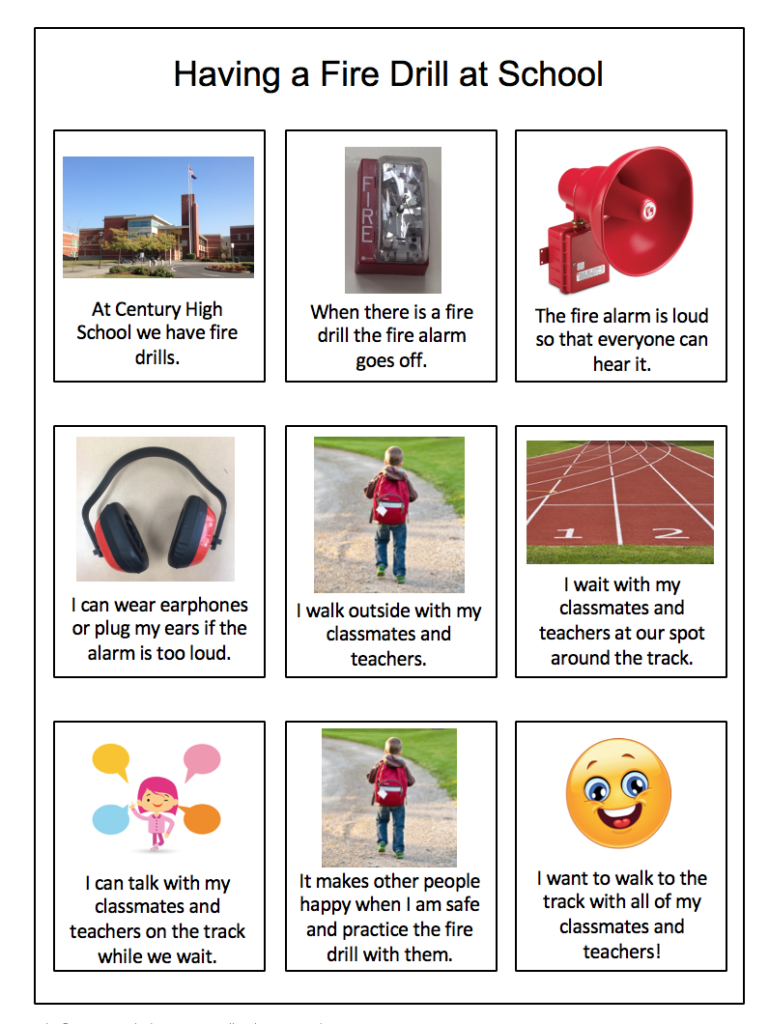
Conclusion
Social stories are used for a variety of reasons to help students better understand different social situations and how to act appropriately during those social situations. Be sure to grab your free editable social stories!
Resources
More, C. M. (2012). Social Stories™ and young children: Strategies for teachers. Intervention in School and Clinic, 47(3), 167-174.
Carol Gray’s The new social story book, 2015

